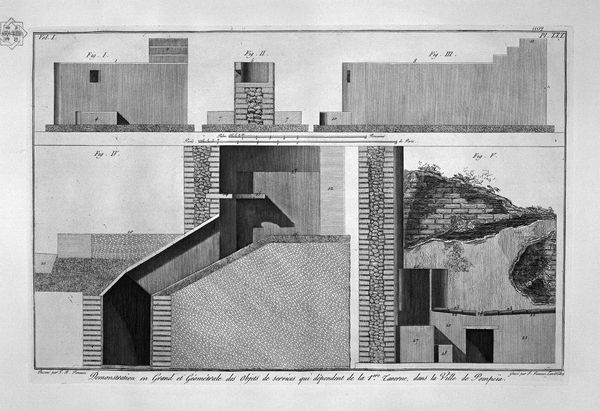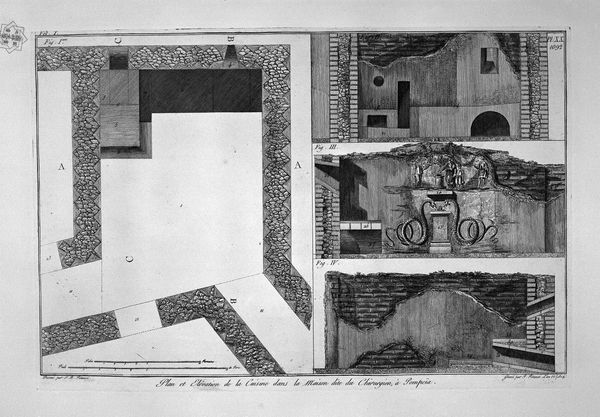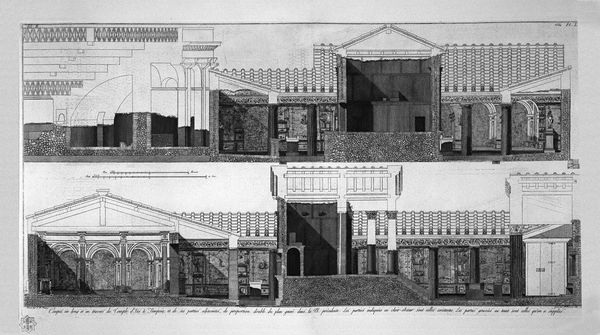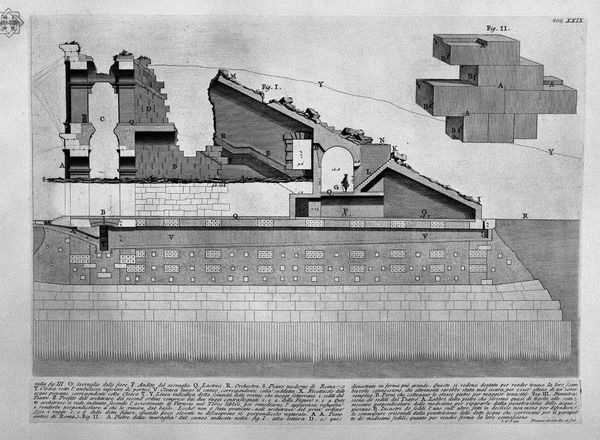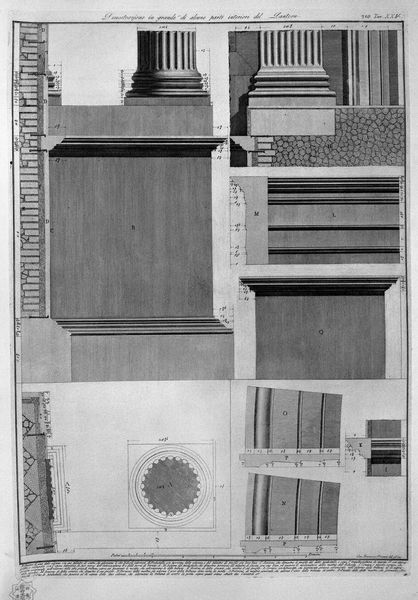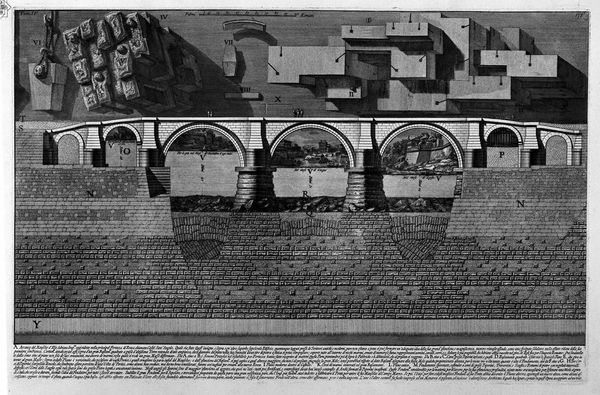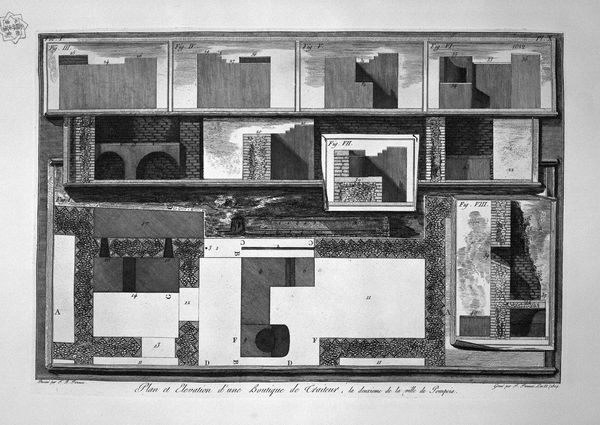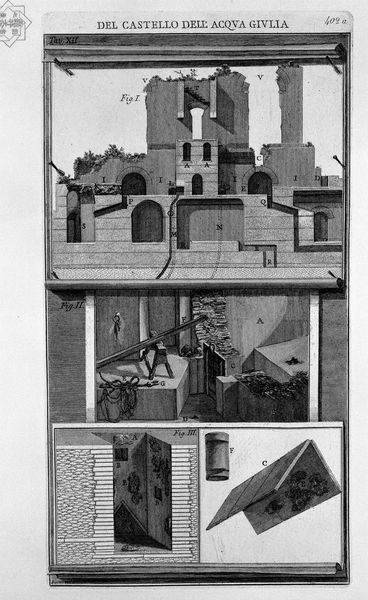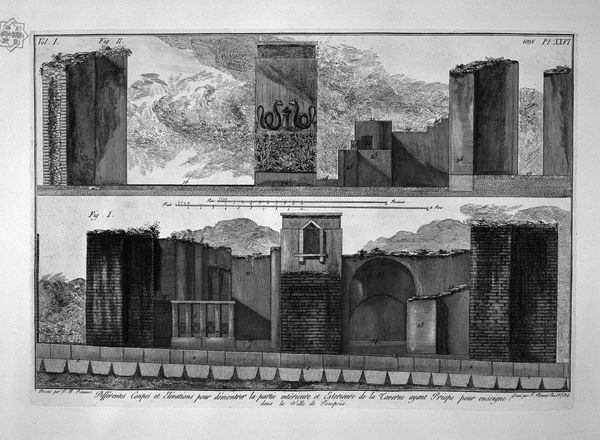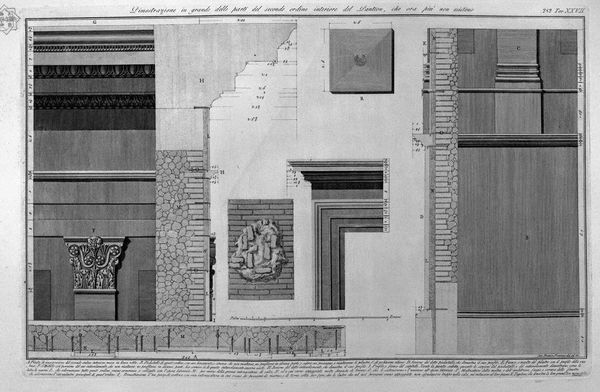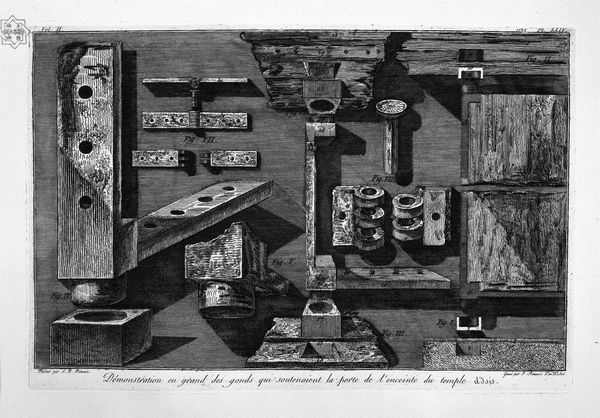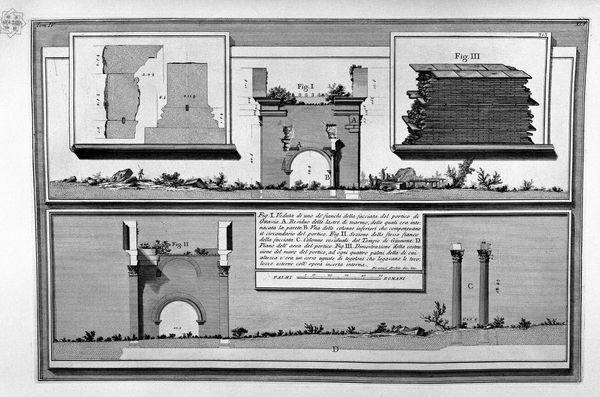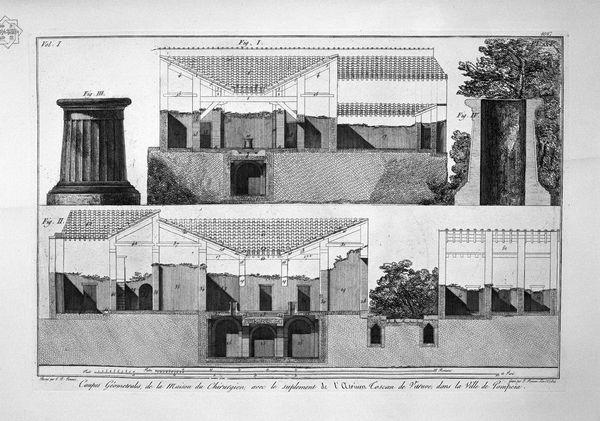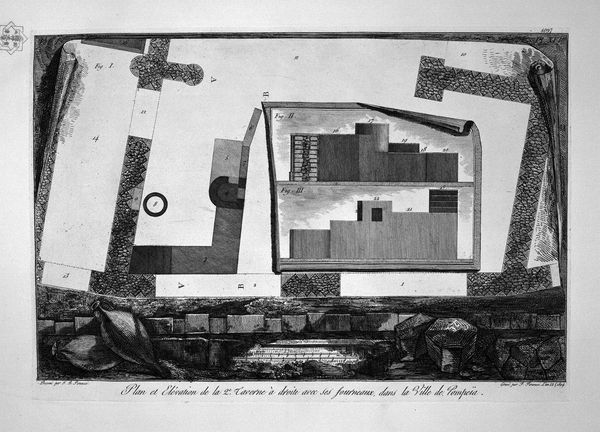
View of the entryway to the city of Pompeii, with sidewalks and shops
0:00
0:00
drawing, print, engraving, architecture
#
drawing
# print
#
sculpture
#
perspective
#
romanesque
#
geometric
#
ancient-mediterranean
#
engraving
#
architecture
#
building
Copyright: Public domain
Editor: This is Giovanni Battista Piranesi’s print titled "View of the entryway to the city of Pompeii, with sidewalks and shops." The lines are so precise and create a really captivating, almost haunting atmosphere. How do you interpret this work? Curator: Haunting is a great word. Look at this work not just as an architectural rendering, but as a commentary on power, ruin, and our relationship with history. Pompeii, frozen in time by Vesuvius, becomes a stage upon which Piranesi explores themes of mortality and the impermanence of empire. The exacting detail emphasizes the scale of the excavation. Editor: So, you’re saying that Piranesi's focus is not only on accurately depicting the architecture but also on exploring the themes that the ruins represent? Curator: Precisely! Consider how Piranesi positions the viewer. We're given a privileged, almost god-like perspective, gazing down at this unearthed city. Who gets to excavate the past? Whose narratives are privileged? The visual language of classical architecture itself was politically charged. Neoclassicism, which Piranesi engaged with, wasn't just about aesthetics. It was intrinsically linked to ideas of order, rationality, and the revival of 'ancient glories' that conveniently legitimized contemporary imperial projects. Do you see how these excavations can be tied to questions of colonialism? Editor: I think I understand. By emphasizing the "ancient glories" of Rome, contemporary powers could justify their own expansion and domination… Curator: Exactly! Piranesi, perhaps unintentionally, invites us to question those justifications. What are we unearthing? And for what purpose? It forces us to look critically at how we use history. Editor: This has given me a lot to think about. I had never considered how architectural drawings can contain complex messages related to politics and society. Curator: The beautiful ruins speak of the temporality of power itself, and question the motives behind rediscovering them. Art allows these themes to become apparent, and helps question past injustices.
Comments
No comments
Be the first to comment and join the conversation on the ultimate creative platform.
